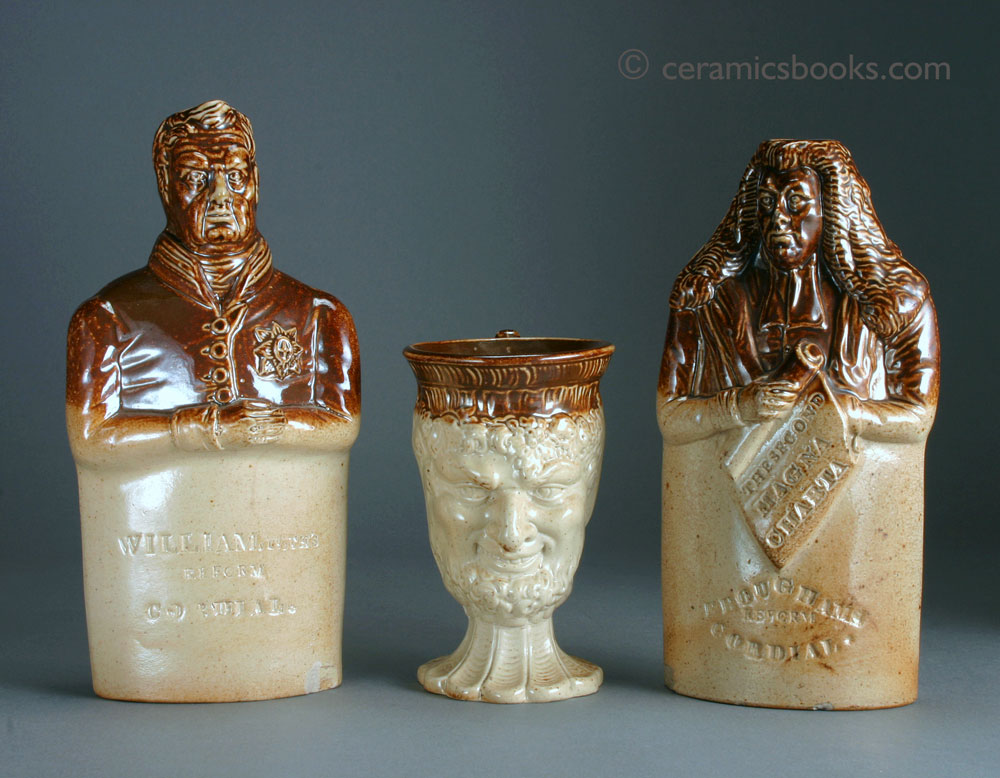Salt-glazing is a technique whereby damp salt is added to the kiln during the firing (through the firebox or vents) at a point above 1200 degrees C. The sodium in the salt volatizes in the kiln atmosphere and chemically bonds with silica in the clay of the pots. This forms a thin layer of extremely hard sodium-alumina-silicate glass-like glaze, often characterized by an orange-peel like dimpled surface.
Salt-glazed pottery is a ‘once-fired’ process (or ‘raw’ fired). Salt-glazed stoneware contains several sub-categories, including brown stoneware, white stoneware, German stoneware (Westerwald etc.), as well as Scratch Blue, Littler’s Blue and so called ‘Sewer-pipe ware’ (also known as Sewer-tile ware in the US).
British salt-glazed stonewares were made by John Dwight (and others) in the late C17th, and later in major potting centres such as Nottingham, Bristol, Derbyshire and London. Staffordshire was also a major producer in the first half of the C18th, especially of white salt-glazed wares. In the C19th stonewares were also made in quantity in Scotland.


